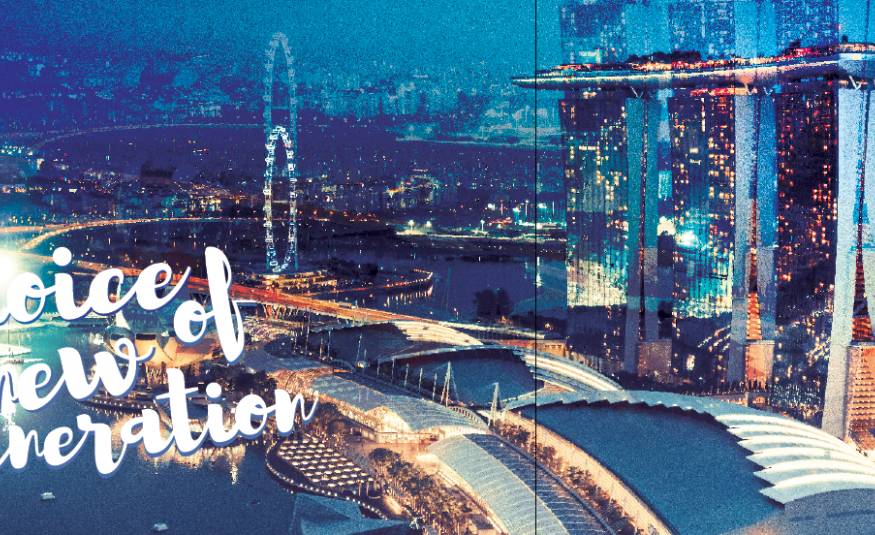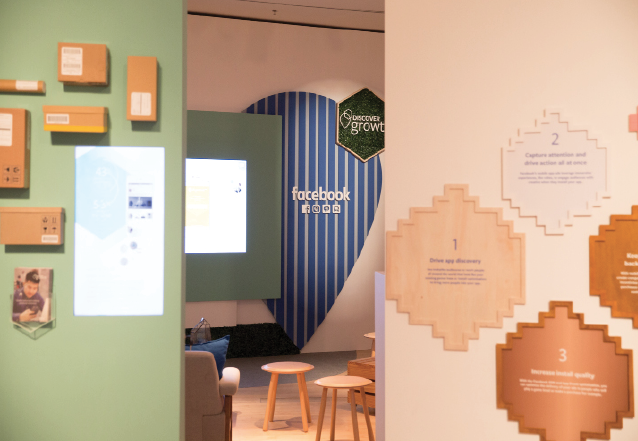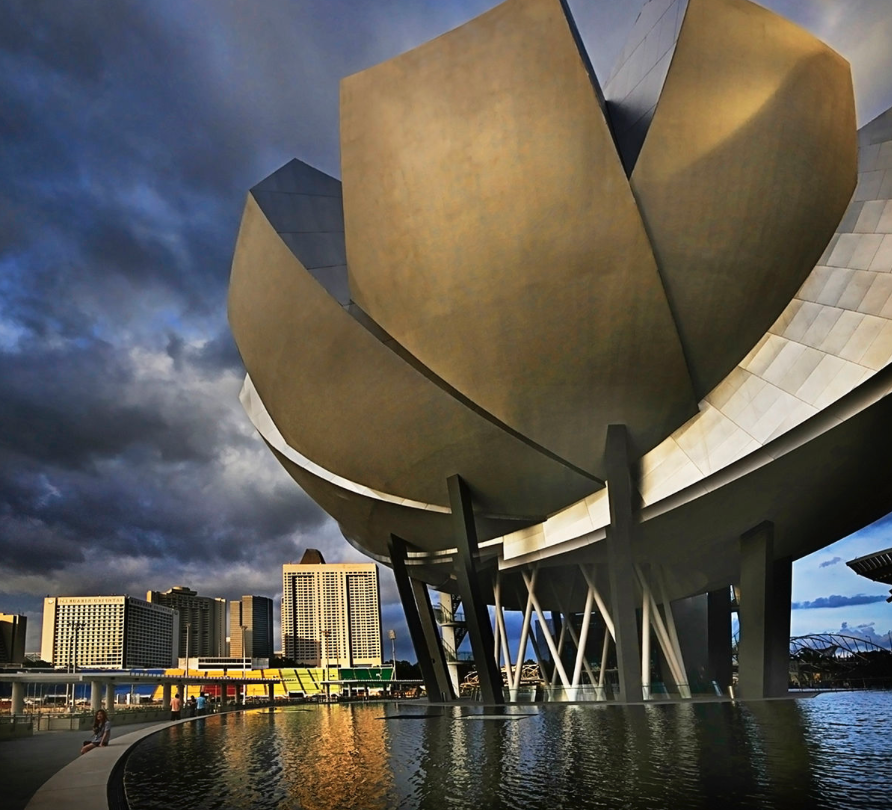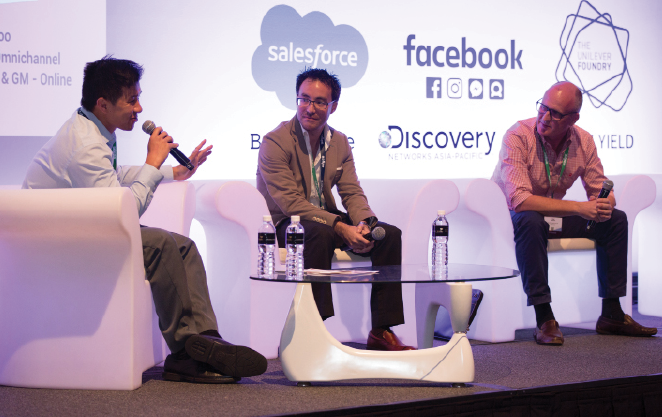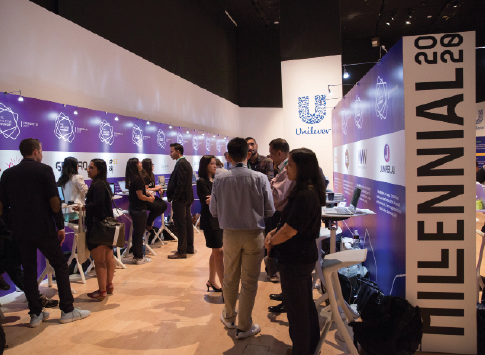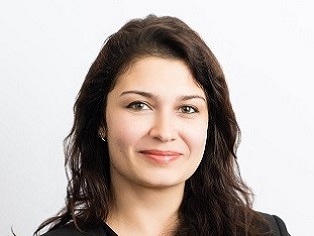EW is always on the lookout for genre defying exhibition formats that cause us to rethink the possibilities of future events. It is no coincidence, however, that Singapore would be the destination that hosted one such innovative showcase, where the world’s foremost organisations, including Facebook, MSNBC and Uber, unite under one roof with a common goal.
Millennial 20/20 Asia took place at the ArtScience Museum, Marina Bay Sands, Singapore from 25-26 October. The venue was a perfect stage for the event, which explores the ‘Millennial mindset’ in a broad range of disciplines including fashion, technology and marketing.
The buzzword ‘Millennial’ no doubt whets the appetite of corporations everywhere as they seek to understand and appeal to the emerging power demographic. However, Millennial 20/20 Asia organiser and the venue provide an environment and format that’s conducive for learning, networking and a palpable sense of spontaneity.
‘’When we were ‘scouting’ for a home to launch Millennial 20/20 Asia, we looked at numerous countries, cities and venues. After much deliberation, we decided on Singapore as our country of choice for many different reasons,” Simon Berger, founder of IM2 Group and co-founder of Millennial 20/20 told EW. “Firstly, Singapore has been ranked as one of Asia’s top convention city for multiple years. It has an international appeal, is strategically located and gives access to key Asian markets, which provided a strong impetus for us to launch Millennial 20/20 Asia in the country.”
Vital to the success of the event was that it could be easily accessed by the whole of Asia, as a substantial amount of attendees visit from South East Asia, as well as China. “For this, Singapore wins hands-down as Changi Airport is a first-class airport and frankly speaking the Asian airlines are probably the best in the world,” Berger adds.
“Singapore is also ranked among the top 18 most innovative cities in the world, has a superb infrastructure and is the only real Smart Nation on the planet; all of these factors played a key-part in our decision. On a more personal-level, we are always excited to visit as there is such a huge amount to see and do in Singapore – my particular favourites are China Town, Marina Bay Gardens and Little India, which is always bustling.”
Berger praised Singapore Tourism Board for its valuable assistance, but adds that the city itself provides so much to exhibition visitors. “We were looking for an unique and iconic venue which was a good fit with our brand, and we found one in the ArtScience Museum (ASM). While last year’s summit set the stage for understanding the landscape in a millennial generation where innovation, disruption and technology are key components of its future, this year’s edition shone the spotlight on solutions, values and technologies in commerce that are integral to business success.”
The entire ArtScience Museum was transformed into an immersive future of commerce showcase, with three conference stages and interactive exhibitions; with additional emphasis on next-generation commerce solutions with new technology in AI & Robotics, Virtual & Augmented Reality and the premiere of a Finance industry track, examining the impact of millennial values on the global industry.
More than 200 speakers and 3,000 of the world’s most influential brands and personalities attended including Google, Shell, OCBC Bank, Accenture, Disney, Subway, DBS, Capitaland, MBS, Credit Suisse, Facebook, Salesforce, CNBC, Forbes, The Economist, Unliver, IKEA, Singapore Post, Qoo10 Singapore, Genting HK, Channel, Mondelez, Shiseido Group, L’Oreal, Pizza Hut, Diageo, Singapore Airlines, Nok Airlines PLC and Park Hotel Group.
The summit took premiered new showcases from the all-new Finance industry sector track – bringing together retail banks, private wealth management, personal finance, fintech start-ups and investors – along with panel presentations on hot topics such as AI & Robotics and Virtual Reality and personalised networking opportunities.
Attendees were able to book networking opportunities with panellists and speakers via an online matching portal ensuring that they really met with the right people.
“Millennial 20/20 this year was all about connecting audiences with experiences and solutions that will empower them for the future economy. It is not just a conference. Visitors were able to explore the latest technologies that are shaping the market live in action through demonstrations, VR experiences and case-study led presentations. On top of this, there were multiple focused meet-ups and behind-the-scenes events where smaller groups came together to tackle a particular topic in detail,” said Rupa Ganatra, Founding Partner, Millennial 20/20.
Discussions centred on how companies can build brand authenticity, innovative experiences and trust in a market landscape that idolises convenience, borderless shopping, digital interactions and multi-dimensional experiences – traits that are typically attributed to today’s customer.
Millennial 20/20 Asia has doubled in size over the past two years but Singapore is still its destination of choice. “Whilst we are sad that we can no longer fit into the Art Science Museum in 2018, we are equally delighted to be moving to another very cool Singapore venue right in the heart of the city on the 24-25 October 2018 – more details to follow very soon.”
Southeast Asia: the new go-to destination for international organisers
By Diana Gineva (pictured), Globex editor, AMR International
It’s clear from AMR’s latest Globex 2017 report that underpenetrated markets in SE Asia have become hot destinations for expansion of leading global players.
In fact, it’s a good time for investment, as Globex indicates the global exhibitions market is forecast to continue growing at 4 per cent CAGR to 2021, driven largely by consistent strong growth in most emerging markets.
With this in mind, I’d like to provide a snapshot of the SE Asian market that could help organisers make more informed strategic planning decisions.
Indonesia, Thailand, Malaysia, Vietnam and the Philippines present attractive expansion opportunities in underserved sectors or regional events through geo-clones or acquisition/partnerships with local organisers.
Despite their small size, these markets are growing rapidly (>5 per cent volume growth year-on-year, generally faster than GDP) driven primarily by underlying economic growth, strong domestic demand and increased importance in the regional trade flow. Strong government support, through local convention and exhibition bureaus, has also contributed to their rapid development in recent years.
Average sqm prices in the region are growing slightly above regional inflation at around 4-5 per cent p.a, driven by continued demand growth and increasing professionalisation of the industry through the entry of international organisers, as well as cost factors such as the opening of new modern facilities (e.g. ICE in Indonesia) and rising wages.
Sectors such as building & construction, machinery, energy, food & beverage, automotive and hospitality are attractive for tradeshows in SE Asia. B2C events are still very common, though organisers are increasingly shifting their focus towards B2B exhibitions, as these are seen as more profitable and under-served. Going forward, growth can be expected predominantly in retail, e-commerce, services and logistics sectors due to the expanding middle class.
Market consolidation varies by country and correlates with the strength of established local organisers.
The Philippines and Thailand are dominated by local players and consolidated with the top five players generating more than 60 per cent of exhibition organising revenue. Meanwhile, markets in the region such as Malaysia and Vietnam remain rather fragmented and present opportunities for further consolidation. The Indonesian exhibition market is highly competitive with around ten major local players, a number of small privately-held local organisers and increasing presence of international organisers.
Leading global players have established a presence in SE Asia, setting up local entities through partnerships or acquisitions. Some major international organisers have already gained a strong foothold in the region, including Reed, UBM, ITE, Comexposium, Tarsus, Koelnmesse and Messe Dusseldorf.
Venue space is largely sufficient to cater for demand in the mid-term with only the Philippines facing a significant supply challenge. Nevertheless, increased venue availability will unlock supply of events and accelerate long term volume growth. I hope this snapshot of the market provides insights into a thriving and diverse exhibitions market. AMR International’s Globex 2017 report features detailed country profiles on seven Southeast Asian countries: Indonesia, Thailand, Singapore, Malaysia, Vietnam, Macau and the Philippines.

